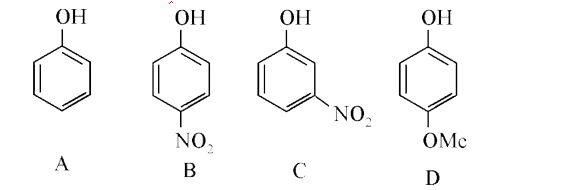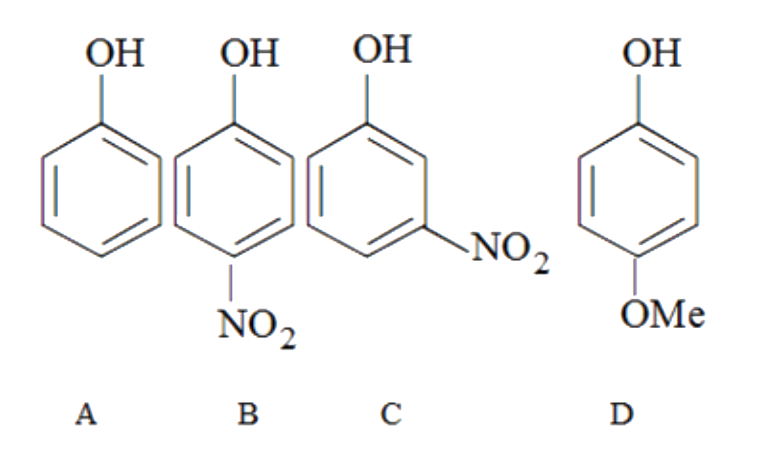The increasing order of pKa of the following amino acids in aqueous solution is:
Gly Asp Lys Arg
Asp lt Gly lt Arg lt Lys
Gly lt Asp lt Arg lt Lys
Asp lt Gly lt Lys lt Arg
Arg lt Lys lt Gly lt Asp
To determine the increasing order of pKa values for the amino acids Glycine (Gly), Aspartic acid (Asp), Lysine (Lys), and Arginine (Arg) in aqueous solution, we need to analyze the structures and properties of each amino acid.
1. Identify the Structures of the Amino Acids:
- Glycine (Gly): The simplest amino acid with one amino group (-NH2) and one carboxylic acid group (-COOH).
- Aspartic Acid (Asp): Contains two carboxylic acid groups and one amino group.
- Lysine (Lys): Contains one carboxylic acid group and two amino groups.
- Arginine (Arg): Contains one carboxylic acid group and three amino groups.
2. Determine the Acidic and Basic Nature:
- Glycine: Neutral due to one acidic (COOH) and one basic (NH2) group.
- Aspartic Acid: Acidic due to two carboxylic acid groups and one basic amino group.
- Lysine: Basic due to one carboxylic acid group and two amino groups.
- Arginine: More basic than lysine due to three amino groups.
3. Assess the pKa Values:
- The pKa value indicates the strength of an acid; lower pKa means a stronger acid.
- Aspartic Acid will have the lowest pKa due to its two acidic groups.
- Glycine will have a higher pKa than Aspartic Acid but lower than Lysine and Arginine.
- Lysine will have a higher pKa than Glycine due to its basic nature.
- Arginine will have the highest pKa due to its strong basic nature.
4. Order the pKa Values:
- From the analysis, we can conclude the order of increasing pKa values:
- Aspartic Acid (lowest pKa)
- Glycine
- Lysine
- Arginine (highest pKa)
5. Final Answer:
- The increasing order of pKa values for the amino acids in aqueous solution is:
- Asp < Gly < Lys < Arg
- Glycine (Gly): The simplest amino acid with one amino group (-NH2) and one carboxylic acid group (-COOH).
- Aspartic Acid (Asp): Contains two carboxylic acid groups and one amino group.
- Lysine (Lys): Contains one carboxylic acid group and two amino groups.
- Arginine (Arg): Contains one carboxylic acid group and three amino groups.
- Glycine: Neutral due to one acidic (COOH) and one basic (NH2) group.
- Aspartic Acid: Acidic due to two carboxylic acid groups and one basic amino group.
- Lysine: Basic due to one carboxylic acid group and two amino groups.
- Arginine: More basic than lysine due to three amino groups.
- The pKa value indicates the strength of an acid; lower pKa means a stronger acid.
- Aspartic Acid will have the lowest pKa due to its two acidic groups.
- Glycine will have a higher pKa than Aspartic Acid but lower than Lysine and Arginine.
- Lysine will have a higher pKa than Glycine due to its basic nature.
- Arginine will have the highest pKa due to its strong basic nature.
- From the analysis, we can conclude the order of increasing pKa values:
- Aspartic Acid (lowest pKa)
- Glycine
- Lysine
- Arginine (highest pKa)
- The increasing order of pKa values for the amino acids in aqueous solution is:
- Asp < Gly < Lys < Arg
Similar Questions
Knowledge Check
Which of the following is an amino acid?
ASerineBAlanineCTyrosineDLysine
Which of the following amino acid is essential
View SolutionThe increasing order of the pKa values of the following compounds is:

View SolutionThe increasing order of the pKa values of the following compounds is

View SolutionWhich of the following salts are acidic in aqueous solutions?
View SolutionFind the correct order of acid strength of the following acids in aqueous solution
View SolutionThe decreasing order of the pKa values of the following compounds is:

View SolutionName the cations given by an acid in aqueous solution.
View Solution

